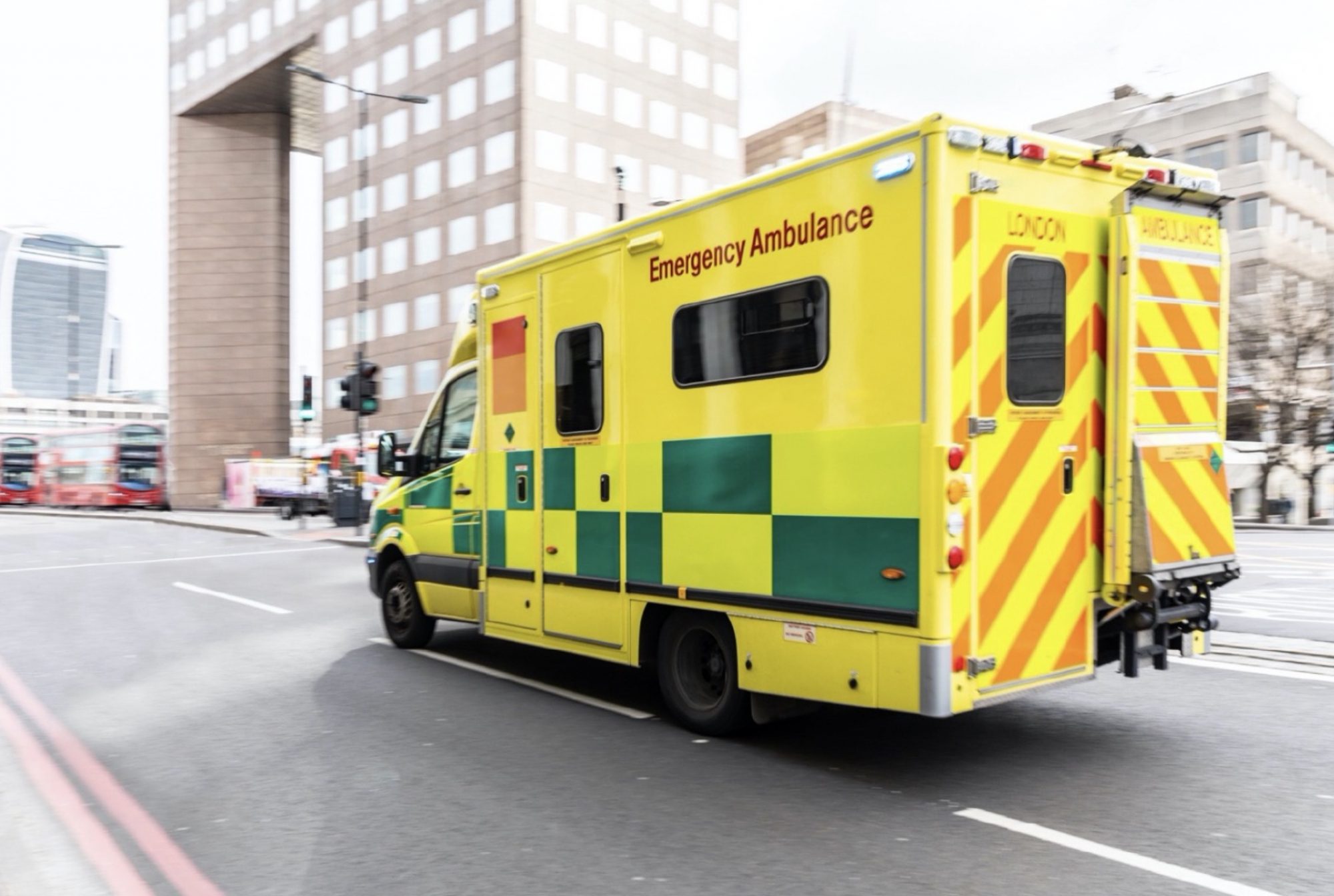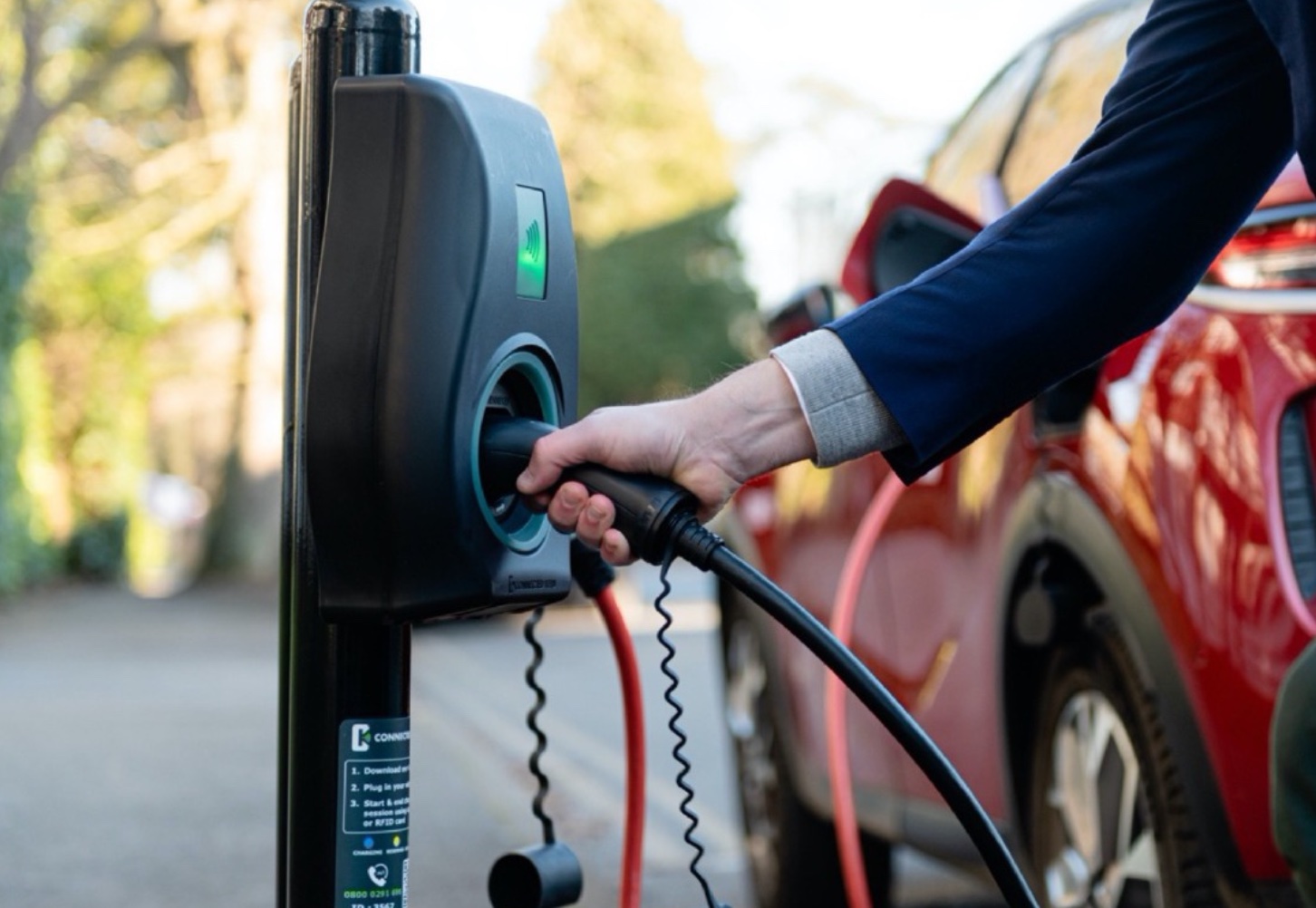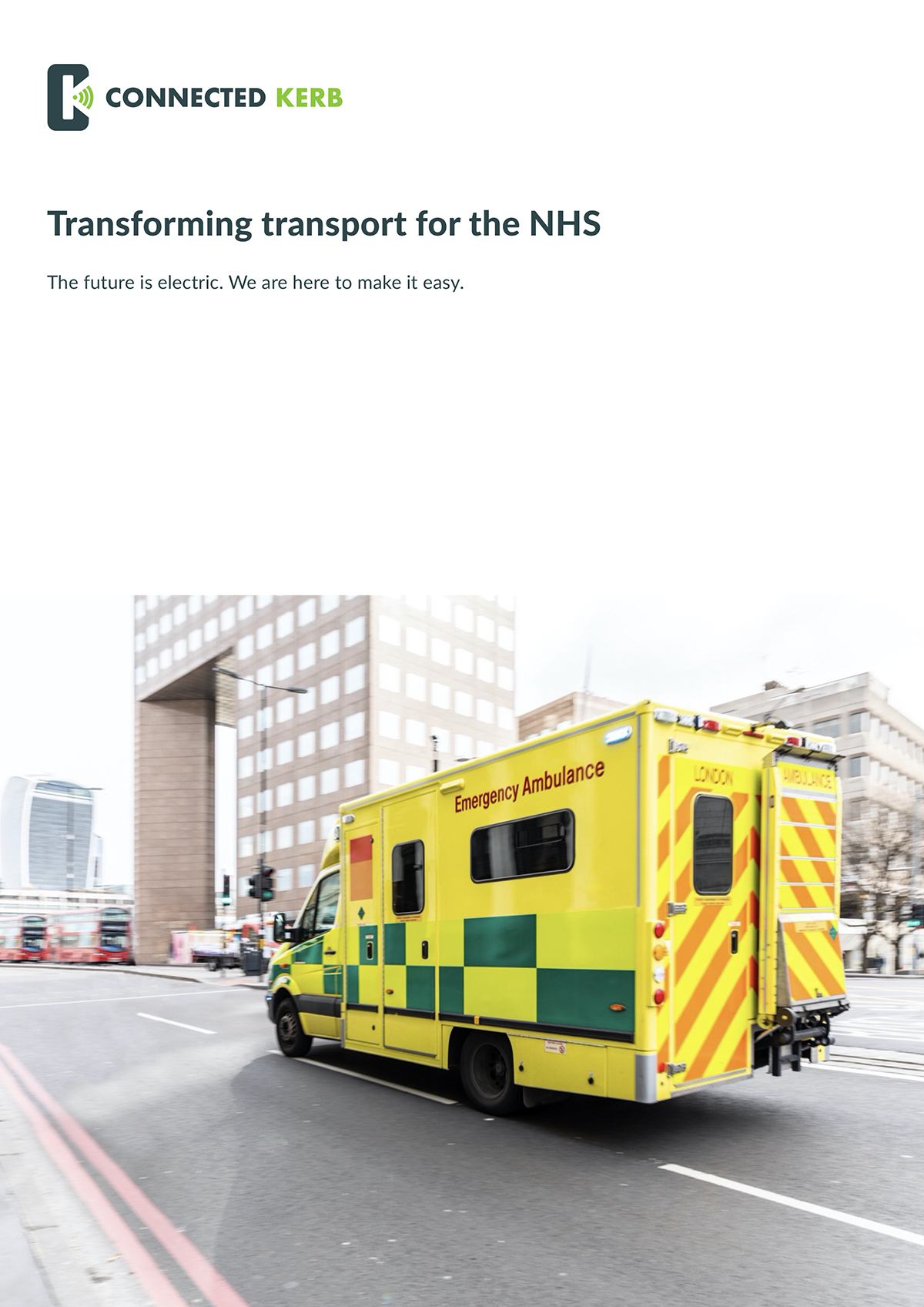Connected Kerb has begun discussions with several NHS trusts about transforming transport and becoming a trusted companion on their EV journey
In 2022 Connected Kerb published a flagship research report “How to meet
the UK’s EV charging needs by 2030” and described a big idea. The idea was for the Government to lead the charge towards public sector electrification by installing convenient, affordable and reliable charging infrastructure across one of the UK’s most prized assets – the National Health Service.
Connected Kerb has begun discussions with several NHS trusts about becoming a trusted companion on their EV journey. It’s a journey on which hospital trusts will receive firstrate support to meet the challenges posed by the 2030 deadline when a ban on the sale of new petrol and diesel vehicles comes into force. We can also assist trusts in making a significant contribution to meeting their net zero aspirations, fulfilling their mission for a more sustainable healthcare landscape.
This ebook details a golden opportunity for NHS trusts to participate in a fully electric future, the hurdles they need to overcome and how Connected Kerb can help them do that.
Historical data suggests around 200,000 parking spaces in the NHS are designated for staff and the remainder for patients and visitors. Similar workplace charging schemes suggest drivers without home charging will charge their vehicles two to three times per week, and those with charging at home less often.
A reasonable guide would be to aim to deploy EV chargers in 25% of staff bays, though a full analysis of transport patterns and power availability would be needed at each site.
It would not be unreasonable to assume a deployment of charging infrastructure in 50,000 bays over five years. Once delivered, NHS fleet services and company car schemes could be used to incentivise vehicle transition.

How transforming transport be Funded?
There are three potential funding routes, which can be combined:
- Privately funded: A deployment funded by infrastructure investors who recover costs by charging drivers. A long term (15+ year) contract would allow tariffs to be lower than most alternatives. Costs can be increased e.g. for visitors to generate NHS revenue, or reduced through subsidies e.g. to incentivise staff as required.
- Lease: The NHS pays an annualised cost for the charging infrastructure and operating costs to lease provider. They then choose the tariff to be applied for charging and/or whether to subsidise.
- Government Funded: Government funding covers capital investment with option for full or partial cost recovery from user charging.
We have the opportunity to design a better more inclusive future
The potential to make the NHS the standard bearer of public sector electrification is huge and the starting gun has already been fired. According to NHS England, 60% of sites have at least one charging point available while 24% of trusts have selfreported that they have sufficient electrical capacity for the EV chargers they forecast they need. Based on average daily mileages, 56% to 77% of all vehicles assessed could already be replaced by battery electric vehicles without relying on opportunity charging. Like with many public sector projects, aside from funding, the only limiting factor is ambition. Local authorities must be bold and resolve to scale up public charging infrastructure not by hundreds, but thousands.

Sustainable mobility in the NHS – The challenge
The Government is facing considerable pressure to meet strict sustainability targets. Another conundrum is an ageing NHS estate that is already using its maximum capacity. Furthermore, the power for chargers must not interrupt the mains supply. Sitting among many funding pressures are the demands to match existing revenue from car parks. Allied to these factors are execution issues such as a lack of knowledge about electric vehicles and often conflicting stakeholder objectives. There are also valid concerns about disruption to staff in a sector where daily work routines simply cannot afford to be compromised. Parking space management is also a longstanding issue which EV charging infrastructure can have a role in tackling.
“THERE’S MORE TO LIFE THAN INCREASING ITS SPEED”
– MAHATMA GANDHI
Meanwhile Connected Kerb continues to buck the trend of seeing fast chargers as a silver bullet with an offering that focuses on longdwell locations. Staff regularly leave their vehicle in a hospital car park for several hours while on shift. It should be remembered that fast charging is more complex, more capacity is required and there is often a higher upfront cost. Faster does not necessarily mean better. The negative impact on battery life is also part of the equation. Connected Kerb recognises that rapids have a place but the convenience offered by longdwell charging is a game changer for any future transition.
Who are Connected Kerb and what can we do for the NHS and transforming transport?
In five years since the company was formed in 2017, Connected Kerb is proud to have delivered over 6 million EV miles and over 3200 sockets. Our strong record in the public sector is illustrated by a major rollout in West Sussex and being recently rated joint 4th best network by Zap Map. Our growth plans have been backed by a £110 million investment from Aviva Investors which will facilitate efforts to support green jobs and install across Aviva’s huge panEuropean real estate portfolio.

We pride ourselves on five operating principles:
- User convenience and confidence: EV charging must match or better the experience of fuelling a petrol or diesel vehicle. Deployment at scale with high reliability gives drivers confidence that charging points will be available when they need them.
- Enabling smart cities: By supporting future technologies such as IoT, 5G and air quality sensors our solutions are futureproofed to support the cities of tomorrow.
- Environmental awareness: Installing charging infrastructure that lasts beyond the market average of 510 years is critical to minimising the impact of transport on the environment.
- Technological development: We continue to explore new technologies, pushing the boundaries of innovation.
- Commercial viability: We offer clients various funding approaches: Firstly, we can take risk on the performance of the charge points with no fixed payment from our client for operation and maintenance (O&M), but with a more significant share of profit.
- Alternatively, we are paid a fixed annual fee for O&M and all the profits are returned to the client. We also propose solutions for largescale deployments.
The Connected Kerb offer
We offer a full turnkey service to NHS trusts from site selection to installation and maintenance. We will start by asking: what vehicles do you want to charge, how long will the vehicles dwell, what available power is on site and what is the project budget?

Gecko
- Onstreet residential environments and car parks
- Discreet – fits to post or bollard
- Multiple colour options
- Hardwearing and secure with doubleskin
Limpet
- Multistorey car parks & perimeter walls
- Wallmounted, no excavation required
- Partially made from recycled tyres
- Positioned in groups of up to 10
Chameleon
- Onstreet residential environments and car parks
- Discreet, low impact on street appearance
- Cost effective option with dual sockets
Scarab
- Suits car parks
- Made of 100% recycled plastic
- Can be configured to ‘talk’ to other grouped chargers.
Data & Power Pack
- Subterranean charge point controller
- Connects to fast fibre
- Supports wireless / inductive charging
- Deployed in all scenarios
Market Leading Software
Open Charge Point Protocol (OCPP 1.6 / 2.0) compliant intelligent software & features:
- Mobile app for both Apple & Android
- Advanced energy management functionality
- Smart tariff, charging & booking functionality
- Contactless payment options with RFID, mobile web payments 24/7 customer service with remote problem solving
Other support available includes:
An EV masterclass plus guidance on how to raise staff awareness on the benefits of charging.
-
- A desktop feasibility study by an inhouse infrastructure planner.
- A 30minute virtual site tour with an expert site assessor.
- An onsite feasibility assessment with a recommendation paper delivered by one of Connected Kerb’s project managers.
- A freeofcharge automated site assessment programme for fleet initiatives.

Convenient, affordable and reliable charging
Connected Kerb’s charging infrastructure outlasts other solutions on the market which is why we encourage our clients to sign longterm contracts. The length of the contract an NHS trust chooses will depend on how long it wants to not worry about electric vehicle charging. Our contracts build in sensible key performance indicators and service levels with most problems fixed remotely – ensuring we can provide a hasslefree experience for both the site owner and users.
We would say we are trying to provide convenience, affordability and reliability. According to the National Housing Survey, 62% of the population cannot charge at home – 34% don’t have a driveway, 28% can park their car but it’s away from an electrical connection. By providing charging facilities for when people are at work, we are helping reduce the strain on the grid at key times and we are using the cleanest fuel mix that there is. We are also helping employers from many industries with fleet drivers solve the common problem that staff do not have home charging facilities.
Choosing the right charger for your site
We are working with software providers to notify users that it might be time to vacate a space. The infrastructure can even penalise a user for not doing so although we want to avoid penalising a driver as much as possible. As a medic, parking should not be the thing they are thinking about at work. For example, a nurse using a 7kw charger, shouldn’t have to come and move their car until after their shift is finished. The need to penalise is then redundant.
We are exploring new technologies and work with parking sensor organisations which provide the ability for a user to book a space. A vehicle will drive over a sensor which can pick up through our software whether a charge has started and could send that user a polite notification.
We will ensure that we are working on the best chargers to achieve the goals that you set out to hit. For example, the capacity that you have on-site is an element we seriously consider when looking into your solutions.
In short, we deploy the right charger for your site.
Enabling smart charging and connectivity to optimise capacity
Last year through our Agile Streets project, Connected Kerb undertook the first trial of public smart charging in the UK in a project designed not only to provide access to more affordable tariffs but also to reduce the strain on the grid. This would happen by shifting a charge to offpeak times, such as when there is a surplus of renewables like wind and solar.
“Power is always cheaper when there is more availability on the grid. Connected Kerb can work with whatever power supply there is. We’ve done work with factories and office buildings so you take less power when the building is taking more power and less power when the building is drawing on more power.”
– Chris Pateman Jones, CEO of Connected Kerb
Conclusion and the next steps towards transforming transport
Connected Kerb has begun serious discussions with several NHS Trusts, which show the potential of this project becoming a reality. We hope these will provide a basis to make a real step forward in the EV transition throughout 2023 and the decade ahead as we aim to get EV-ready for 2030 and hit net zero by 2050.
You can get everything you need to know about our NHS offering by visiting www.connectedkerb.com/NHS where you can also book a meeting with our Head of NHS & Public Sector Fleet, Vicki Evans.
Good luck!
More About Stakeholder
-
Connected Kerb – electric vehicle (EV) charging infrastructure solutions
Connected Kerb provide charging infrastructure solutions for electric vehicles, making a sustainable future achievable.



